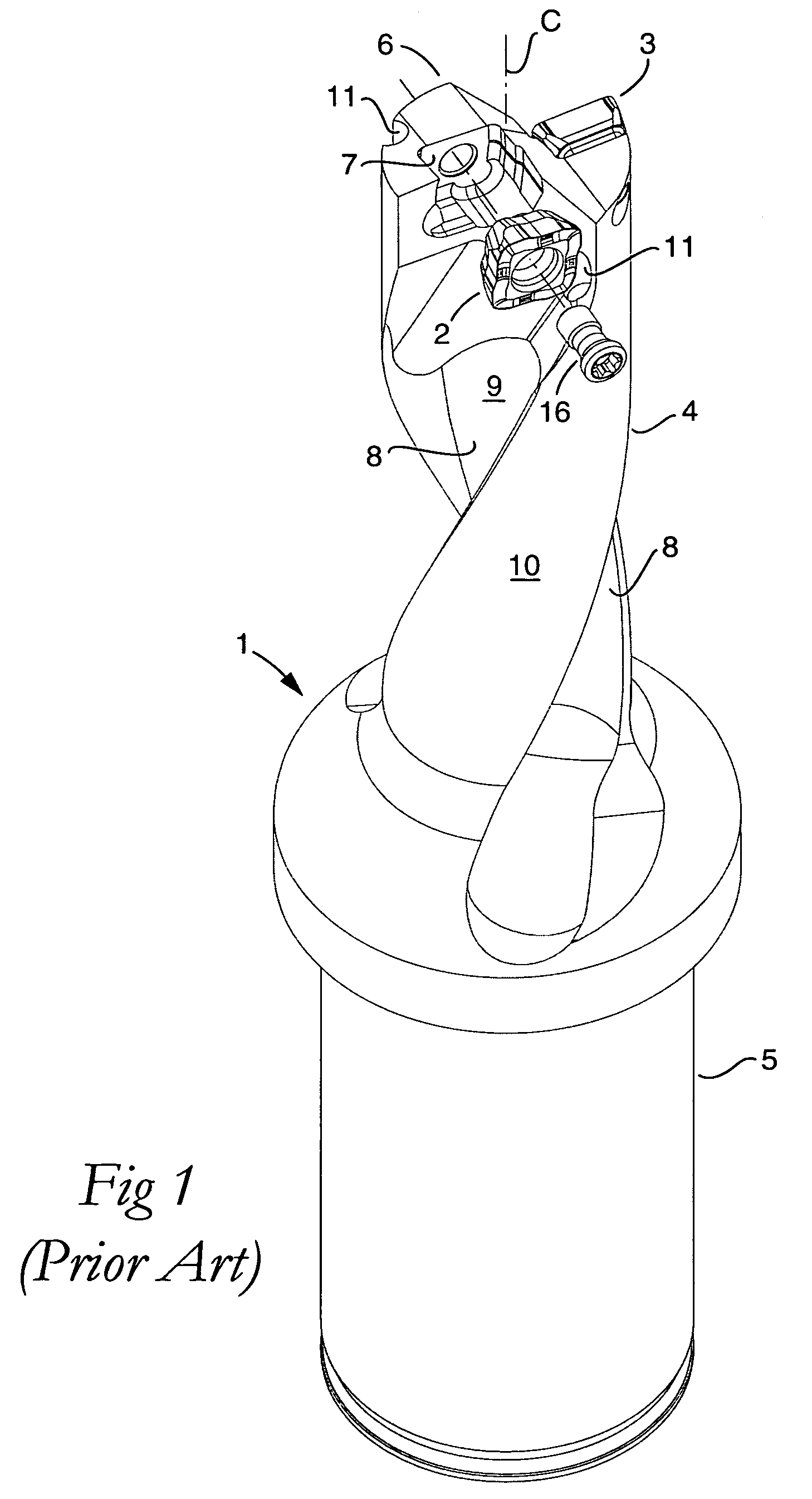Drill and a drill cutting insert
a cutting insert and drill technology, applied in the direction of cutting inserts, twist drills, manufacturing tools, etc., can solve the problems of reducing the material thickness of the cutting insert, and the difficulty of adjusting the drill bi
- Summary
- Abstract
- Description
- Claims
- Application Information
AI Technical Summary
Benefits of technology
Problems solved by technology
Method used
Image
Examples
Embodiment Construction
[0035]A hint to overcoming the deficiencies of the prior art drills was obtained when tracks or marks from the chips were discovered on the mouth surface 34. From this discovery, the conclusion was drawn that the numerous chips during the passage thereof above the screw head beat against the mouth surface. The beating of the extremely hot chips against the mouth surface by itself applies extraordinary mechanical forces to the rear part of the cutting insert. Furthermore, fragments of the chips are likely to be separated and forced into the wedge-shaped tapering gap S between the envelope surface 22 of the screw head and the upper part of the hole 17 (see FIGS. 4 and 5). If the chip fragments are pressed down by a great force into the gap, a wedge action arises that leads to the cracking of the cutting insert.
[0036]Based on the above-mentioned insight, the problem has been solved in the way that is seen in FIGS. 6-8, viz. by making the mouth surface 34 in the hole 17 of the cutting i...
PUM
| Property | Measurement | Unit |
|---|---|---|
| angle | aaaaa | aaaaa |
| thickness | aaaaa | aaaaa |
| diameter | aaaaa | aaaaa |
Abstract
Description
Claims
Application Information
 Login to View More
Login to View More - R&D
- Intellectual Property
- Life Sciences
- Materials
- Tech Scout
- Unparalleled Data Quality
- Higher Quality Content
- 60% Fewer Hallucinations
Browse by: Latest US Patents, China's latest patents, Technical Efficacy Thesaurus, Application Domain, Technology Topic, Popular Technical Reports.
© 2025 PatSnap. All rights reserved.Legal|Privacy policy|Modern Slavery Act Transparency Statement|Sitemap|About US| Contact US: help@patsnap.com



